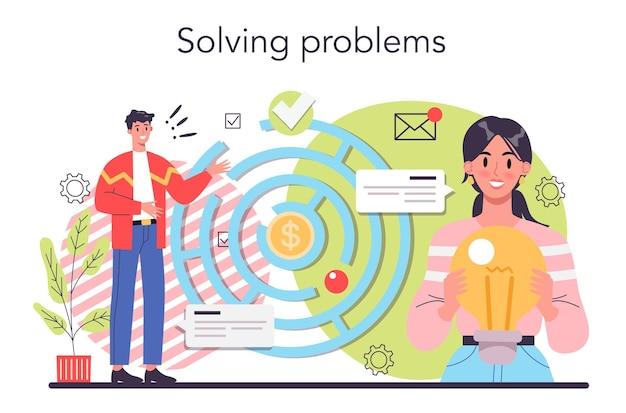Vinyl plank flooring has become a popular choice for homeowners due to its affordability and durability compared to hardwood floors. However, some homeowners find themselves unhappy with their vinyl plank flooring, feeling like it’s a waste of money and effort. Whether it’s the quality, the durability, or the general aesthetic, many are unsatisfied with their vinyl flooring.
What are the issues with vinyl plank flooring, and why are some people unhappy with it? In this blog post, we’ll explore the pros and cons of vinyl plank flooring, as well as some of the most common problems that homeowners face with it. We’ll also discuss some solutions and tips for maintaining your vinyl plank flooring so that you can avoid hating it altogether.
From settling issues to wear and tear, there are several factors that can lead to dissatisfaction with your vinyl flooring. But fear not! By understanding some of the common problems and finding the right solutions, you can enjoy your vinyl plank flooring for years to come. Let’s dive in and explore the world of vinyl flooring so that you can make an informed decision on whether it is the right fit for your needs.
LVP Flooring
Vinyl plank flooring is gaining more popularity in today’s world because of its durability, affordability, and easy installation process. The term LVP, which stands for Luxury Vinyl Planks, is used interchangeably with vinyl plank flooring.
LVP flooring is an incredibly versatile flooring type that is perfect for homes with children and pets. It has a hard top layer that can withstand any scratches, dents, or spills. Therefore, it is a low maintenance flooring type that is perfect for busy households.
Here are some key takeaways about LVP flooring:
- LVP flooring can mimic the look of traditional hardwood floors without the high cost associated with hardwood.
- It is a water-resistant flooring type, making it perfect for bathrooms, laundry rooms, and kitchens.
- LVP flooring is available in different colors and finishes, which makes it possible to match any home decor and style.
- It requires little to no maintenance and is easy to clean with a broom or vacuum cleaner.
In conclusion, LVP flooring is an excellent choice for homeowners who want the look and feel of hardwood flooring without breaking the bank. It is durable, easy to maintain, and water-resistant, which makes it perfect for high traffic areas in a home. Upgrade your home’s flooring with LVP flooring and enjoy the benefits for years to come.
LVT Flooring: A Great Alternative to Vinyl Plank Flooring
Vinyl plank flooring has become popular due to its durability and affordability. However, if you are not satisfied with your vinyl plank flooring, you may want to consider LVT flooring as a great alternative. LVT (Luxury Vinyl Tile) flooring is a type of vinyl plank flooring that offers several advantages over traditional vinyl flooring.
What is LVT Flooring
LVT flooring is a type of vinyl flooring that is designed to mimic the look and texture of natural stone or ceramic tiles. It is made of multiple layers of vinyl, including a top wear layer, a design layer, and a backing layer. LVT flooring is available in a variety of colors and patterns, which allows you to create a unique and personalized look for your home.
Advantages of LVT Flooring
-
Durability: LVT flooring is highly durable and can withstand heavy traffic and wear and tear. It is scratch-resistant, water-resistant, and easy to maintain, making it a great choice for high-traffic areas such as kitchens and bathrooms.
-
Comfort: LVT flooring is softer and more comfortable underfoot than natural stone or ceramic tiles. It also provides better insulation against cold, which can be important in colder climates.
-
Easy Installation: LVT flooring can be installed quickly and easily without the need for specialized tools or equipment. It can be installed over most existing flooring surfaces, which saves time and money on removal and disposal.
-
Cost-effective: While LVT flooring may be slightly more expensive than traditional vinyl flooring, it is still more affordable than natural stone or ceramic tiles. It is also a cost-effective alternative to other flooring materials such as hardwood or laminate.
-
Aesthetic Appeal: LVT flooring comes in a wide range of colors, patterns, and textures, which allows for endless design possibilities. You can create a floor that looks like natural stone, wood, or other materials without the cost and maintenance of the real thing.
If you are not happy with your vinyl plank flooring, consider LVT flooring as a great alternative. With its durability, comfort, easy installation, cost-effectiveness, and aesthetic appeal, LVT flooring may be the perfect choice for your home. Take advantage of the benefits of LVT flooring and create a floor that you will love for years to come.
Luxury Vinyl Plank: An Alternative to Make You Love Your Flooring
If you’re one of those people who hates their vinyl plank flooring, you’re not alone. But before you start ripping it up and regretting your decision, it’s worth taking a closer look at luxury vinyl plank (LVP).
What is Luxury Vinyl Plank
Luxury vinyl plank is a type of resilient flooring that mimics the look of real hardwood or stone flooring. Unlike traditional vinyl flooring, LVP is thicker, more durable, and has a realistic texture that makes it look more like the real thing.
Benefits of Luxury Vinyl Plank
Here are some benefits of opting for luxury vinyl plank flooring:
- Affordable: LVP is one of the most affordable flooring options on the market, making it a great choice for those on a budget.
- Durable: Luxury vinyl plank is suitable for high-traffic areas and can withstand heavy foot traffic, making it an excellent option for homes with kids and pets.
- Water-resistant: LVP is water-resistant, making it an excellent choice for kitchens, bathrooms, and laundry rooms.
- Easy to Clean: LVP is easy to clean and maintain. You can sweep, vacuum, or damp mop it to keep it looking its best.
- Versatile: LVP comes in a wide variety of colors, styles and can mimic the look of various flooring types like hardwood or stone.
How to Install Luxury Vinyl Plank
If you’re handy, you may be able to install LVP yourself, but hiring a professional is always the best option. Professional installation ensures your LVP is installed correctly, giving it a longer lifespan and a better overall look.
Luxury vinyl plank is an excellent alternative for people who hate their vinyl plank flooring. It’s affordable, durable, water-resistant, and easy to clean, making it an excellent choice for any home. If you’re looking to switch up your flooring and give your home a fresh new look, luxury vinyl plank might be the way to go.
Vinyl Plank Flooring: A Costly Junk That’s Hard to Love
With a wide range of flooring options available in the market, vinyl plank flooring has become a popular choice for homeowners looking for an affordable and stylish option. But is it really worth the hype?
The Hype Around Vinyl Plank Flooring
Vinyl plank flooring is marketed as a durable, easy-to-install, and waterproof flooring option that can mimic the look of hardwood floors without the high cost. It can be installed in any room of the house, including the basement and the bathroom, making it an ideal option for homeowners who want a low-maintenance flooring option.
Why Vinyl Plank Flooring is Not Worth the Hype
Despite its popularity, vinyl plank flooring is not without its drawbacks. Here are some reasons why it is a junk flooring option:
-
Toxic Chemicals: Vinyl plank flooring is made of vinyl, a synthetic material that can release toxic chemicals, including phthalates and formaldehyde, which can cause health problems such as asthma, allergies, and even cancer.
-
Durability Concerns: Despite being marketed as durable, vinyl plank flooring has a relatively short lifespan compared to other flooring options. It can easily scratch, dent, and fade, especially in high-traffic areas.
-
Difficult to Repair: If vinyl plank flooring gets damaged, it can be challenging to repair without replacing the entire section. Unlike hardwood floors, which can be sanded and refinished, vinyl plank flooring must be replaced, which can be costly.
-
Environmental Concerns: Vinyl plank flooring is not an environmentally friendly option. It is not biodegradable and can take hundreds of years to decompose in landfills.
In conclusion, vinyl plank flooring may have some benefits, but it is not worth the hype. With concerns surrounding its toxicity, durability, repairability, and environmental impact, homeowners may want to consider other flooring options. When choosing a flooring option, it’s essential to do your research and choose one that aligns with your values, preferences, and lifestyle.
Vinyl Plank Flooring: Pros and Cons
Vinyl plank flooring is quickly becoming a popular option among homeowners for its durability, affordability, and versatility. However, there are also some downsides to this type of flooring. In this section, we’ll take a closer look at the pros and cons of vinyl plank flooring to help you make an informed decision.
Pros
- Affordability: Vinyl plank flooring is often less expensive than other flooring options, such as hardwood or tile.
- Easy to Install: Vinyl plank flooring is relatively easy to install, making it a great option for DIY enthusiasts.
- Water-Resistant: Vinyl plank flooring is water-resistant, making it ideal for use in areas prone to water damage, such as bathrooms and kitchens.
- Durable: Vinyl plank flooring is durable and able to withstand heavy foot traffic without showing wear and tear.
- Versatile: Vinyl plank flooring is available in a range of colors and styles, allowing you to achieve the look you want.
Cons
- Not as Long-Lasting as Hardwood: While vinyl plank flooring is durable, it’s not as long-lasting as hardwood flooring.
- Can’t be Refinished: Unlike hardwood flooring, vinyl plank flooring can’t be refinished, meaning that if it becomes damaged, it will need to be replaced.
- May Require Underlayment: Depending on the condition of your subfloor, vinyl plank flooring may require an underlayment, adding extra time and expense to the installation process.
- May Fade in Direct Sunlight: Vinyl plank flooring may fade over time if exposed to direct sunlight, making it less suitable for rooms with large windows.
In conclusion, vinyl plank flooring has its pros and cons, and it’s important to consider both before making a decision. While it’s an affordable and versatile option, it may not last as long as hardwood flooring and may require an underlayment during installation. However, it’s a great water-resistant option for areas prone to moisture, and there are plenty of different styles to choose from.
Why Vinyl Flooring is Hated by Some People
Vinyl flooring has been a popular flooring option for decades due to its affordability, durability, and ease of installation. However, there’s no denying that some people have strong negative feelings about vinyl flooring. Why do people not like vinyl flooring? Here are some reasons:
It’s Not Eco-Friendly
- Vinyl flooring is made of synthetic materials that are not biodegradable and are difficult to recycle.
- The manufacturing process of vinyl flooring is known to release harmful chemicals, including volatile organic compounds (VOCs).
It Looks Artificial
- Vinyl flooring is often designed to mimic the look of natural materials, such as hardwood or natural stone, but it will never be able to replicate the real thing.
- The patterns on vinyl flooring can look repetitive and fake, which can be a turnoff for some people.
It Can Be Noisy
- Vinyl flooring can produce a hollow sound when walked on, which can be irritating, especially in quiet rooms.
- If installed improperly, vinyl flooring can produce a clicking or popping sound as it expands and contracts.
It Can Be Difficult to Remove
- Once installed, vinyl flooring can be difficult to remove and could require professional help.
- Removing vinyl flooring can be time-consuming and messy, involving scraping and prying up multiple layers.
It Has a Cheap Reputation
- Some people associate vinyl flooring with cheap motels or outdated kitchens and bathrooms.
- Vinyl flooring is often viewed as a budget-friendly option, which could mean lower quality in the eyes of some consumers.
In conclusion, there are several reasons why not everyone is a fan of vinyl flooring. From concerns about its impact on the environment to its artificial appearance and potential for noise, people have their reservations. However, it’s important to remember that vinyl flooring can be a practical and affordable option for some households, especially those on a tight budget. Ultimately, the choice of flooring will vary depending on individual preferences.
What Are the Problems with Vinyl Plank Flooring
Vinyl plank flooring has become a popular flooring option in recent years, but it is not exempt from problems. Here are some of the most common issues faced by homeowners with vinyl plank flooring:
1. Prone to Scratches
Vinyl plank flooring is susceptible to scratches, especially if you have pets or move furniture around frequently. Even small pebbles or debris can cause scratches on the surface. Although vinyl plank flooring is marketed as scratch-resistant, it can still get scratched.
2. Not Completely Waterproof
While vinyl plank flooring is water-resistant, it is not completely waterproof. If you spill water on the floor and don’t clean it up immediately, it can seep through the seams and cause damage to the subfloor. Additionally, if there is excessive water damage, the vinyl planks may need to be replaced.
3. Unsuitable for Extreme Temperatures
Vinyl plank flooring is not recommended for installation in areas with extreme temperature fluctuations, such as unheated basements or outdoor areas. Extreme temperatures can cause vinyl planks to contract or expand, leading to buckling, warping, or separation.
4. Prone to Fading
Exposure to sunlight can cause vinyl plank flooring to fade over time. Direct sunlight can also cause the floor to become discolored or turn yellow. It is best to avoid installation in areas with direct sunlight, or to use blinds or curtains to limit exposure.
5. Difficult to Repair
If a vinyl plank is damaged, it can be challenging to repair without replacing the entire plank. Even professional repair services may not be able to match the original color and pattern of the flooring, leading to an obvious patch. This can be a costly and time-consuming process.
In conclusion, while vinyl plank flooring offers several benefits, like durability and ease of maintenance, it is not without its problems. Homeowners should weigh the pros and cons of vinyl plank flooring before making a decision and be prepared to address the possible issues that may arise.
How Long Does It Take for Vinyl Plank Flooring to Settle
Vinyl plank flooring has been gaining popularity in recent years due to its affordability, durability, and ease of installation. However, many homeowners experience issues with their vinyl plank flooring, including buckling, separating, and gaps. One common question that arises regarding vinyl plank flooring is how long it takes for it to settle. Here are some key things to keep in mind:
The Short Answer
Vinyl plank flooring typically takes around 48 hours to settle. However, this timeline can vary depending on several factors, including temperature, humidity, and foot traffic.
Temperature
Vinyl plank flooring should be installed at room temperature (between 65 and 85 degrees Fahrenheit) to avoid installation problems. If the temperature is colder or warmer than the recommended range, it can affect the adhesive used to secure the planks. Additionally, rapid temperature changes can cause expansion or contraction of the flooring, which can lead to issues.
Humidity
Humidity levels can also impact the installation and settling of vinyl plank flooring. High humidity can lead to expansion, while low humidity can result in contraction. It’s important to acclimate the planks to the room’s humidity level before installation to prevent these issues from occurring.
Foot Traffic
While it’s important to let your vinyl plank flooring settle for at least 48 hours, it’s also crucial to minimize foot traffic during that time. Heavy foot traffic can disrupt the settling process and cause the planks to shift, buckle, or separate.
Other Factors
Other factors that can impact the settling time of vinyl plank flooring include the subfloor type, the quality of the adhesive used, and the overall installation quality. It’s crucial to follow the manufacturer’s instructions when installing vinyl plank flooring to ensure it settles properly and lasts for years to come.
Key Takeaways
- Vinyl plank flooring typically takes around 48 hours to settle.
- Temperature and humidity levels can impact the installation and settling of vinyl plank flooring.
- Heavy foot traffic during the settling process can cause issues.
- Proper installation is crucial for the longevity of vinyl plank flooring.
In conclusion, knowing how long it takes for vinyl plank flooring to settle can help prevent installation problems and ensure that your flooring lasts for years to come. By following the manufacturer’s instructions and considering temperature, humidity, foot traffic, and other factors, you can install vinyl plank flooring that will look great and stand the test of time.


